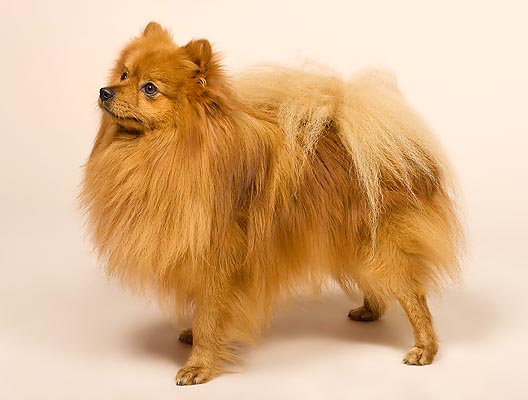Family : Canidae

Text © Pietro Paolo Condò – Giudice Enci-fci

English translation by Mario Beltramini

Lively, robust, long-living. An ancestor lived already with the man by the Stone Age © Mazza
Of ancient origin and descendants from the old Canis familiaris palustris living in the peat-bogs of the Stone Age, the German Spitz have always been living beside the man; the big ones were helping him in guarding houses and farms, the smaller ones were not only excellent alerter, but also ideal companion dogs.
The Spitz is characterized by double coat, with short and thick down-hair and by shorter and thick overcoat on head, ears, front of the limbs and feet, long and abundant on the remainder of the body, neither undulated nor curled, with mane on the neck and with fringes on the back sides of the forelimbs, culottes on the hind ones and thick tail.
Colour: wolf-grey (Wolfsspitz), black, white and brown (Great Spitz), black, white, brown, wolf-grey and orange (Medium, Miniature and Dwarf Spitz).
The head is medium-sized, with moderately pronounced stop, muzzle well proportioned to the skull, small truffle, medium-sized eyes and of dark colour; small ears, pointed and erect.
The neck is of medium length, covered by a mane-like collar, the chest is well lowered and curved, the withers are well pronounced, the back is the shortest possible, the kidney short and broad, the rump, short and not subsiding, and the belly moderately retracted. The tail is attached high and has a medium length, very thick and rolled up on the back. The forelimbs are straight and quite broad on the front; the hind ones are much muscled, the feet the smallest possible and round.
The Spitz exists in different sizes: Wolfsspitz, known also as Keeshond (49 cm), Great Spitz or Grossspitz (46), Medium Spitz or Mittelspitz (34), Miniature Spitz or Kleinspitz (26) and Dwarf Spitz or Zwergspitz (20).
It is a dog very affectionate to its master, but not burdensome, always attentive and therefore very good alerter, loyal and discreet, intelligent, very receptive and therefore easily trainable, lively, robust and particularly long living.
→ To appreciate the biodiversity within the DOG BREEDS please click here.
